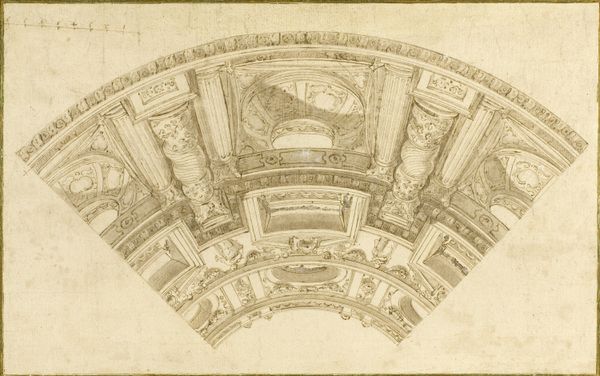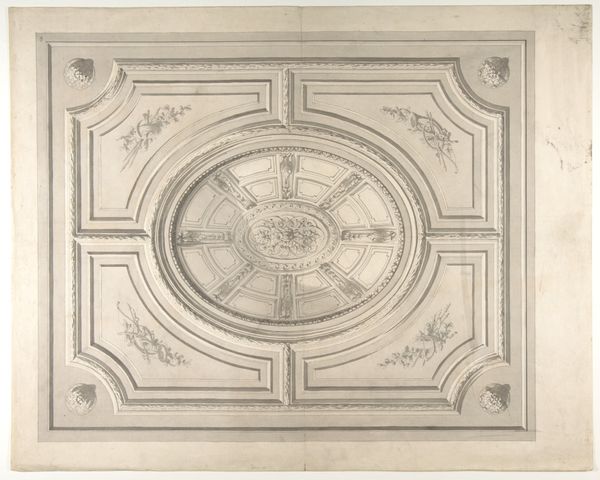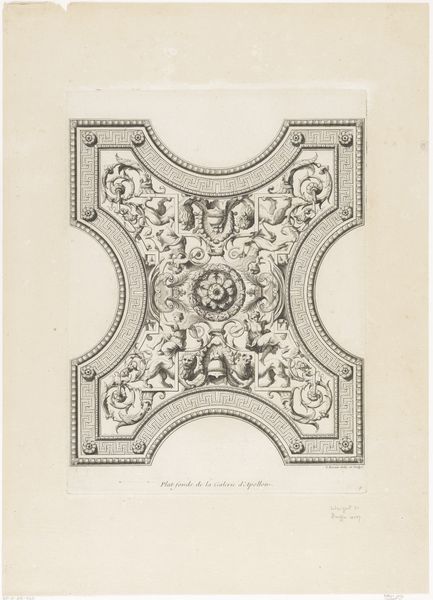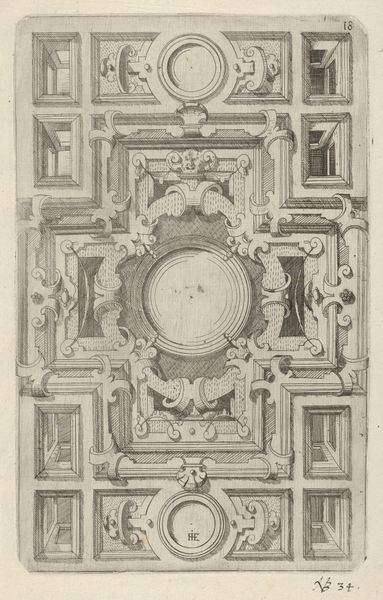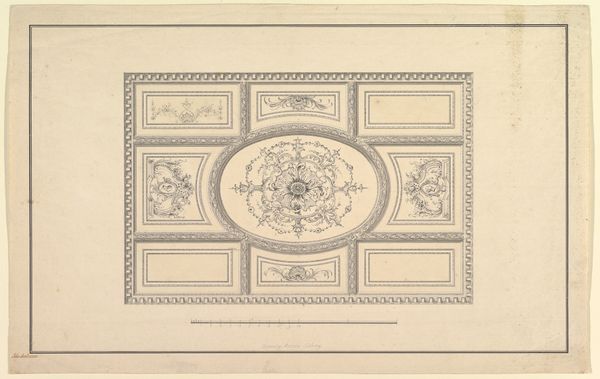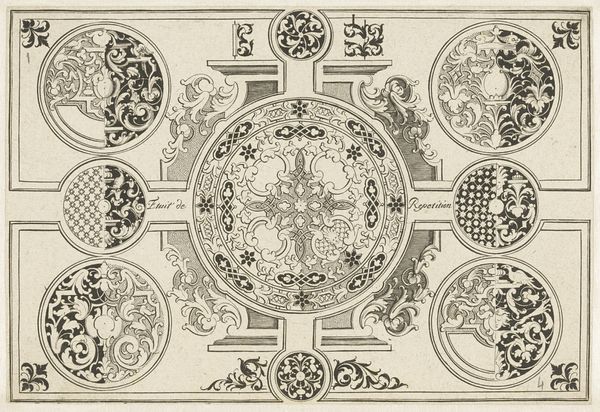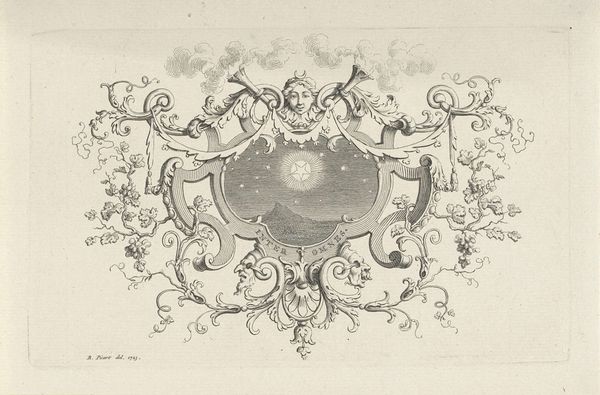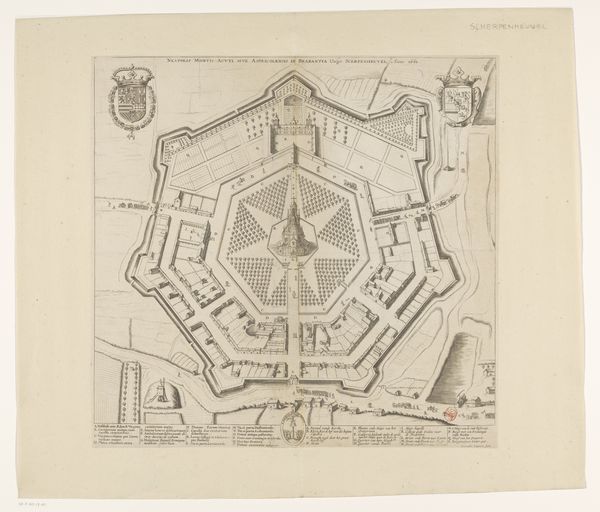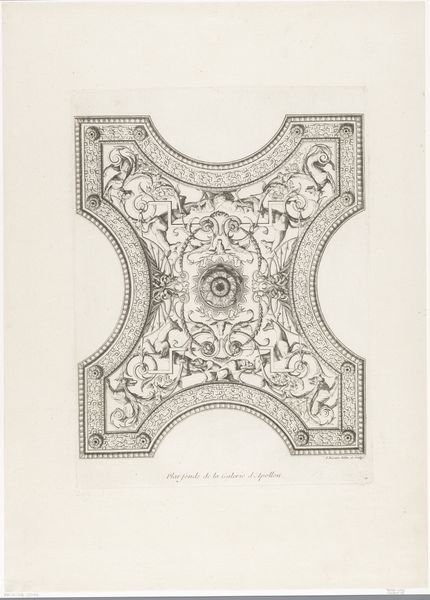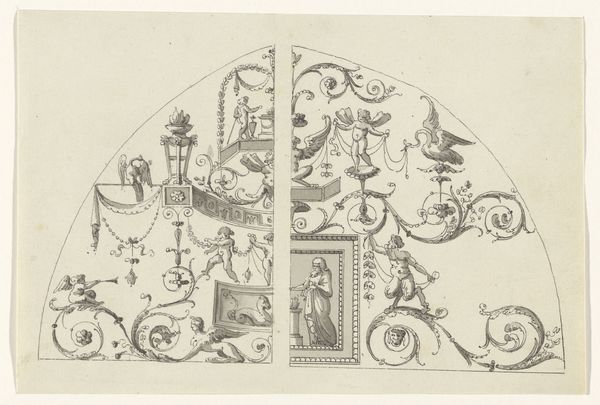
Dimensions: height 195 mm, width 250 mm
Copyright: Rijks Museum: Open Domain
Editor: This photograph, titled "Plafond in apsis van de Villa Madama te Rome," was taken by Romualdo Moscioni sometime between 1868 and 1900. It appears to be a print of a frescoed ceiling, capturing the intricate details and the Neoclassical style. It gives a real sense of the craftsmanship that went into this room, the planning of labour needed for the overall effect, what do you make of it? Curator: This image, a photograph *of* a fresco, immediately brings to mind questions of reproduction and access. Moscioni's print flattens the original fresco, transforming a physical, architectural element into a portable, consumable object. Think about the labor involved – from the original artists crafting the fresco in Villa Madama, to Moscioni and his photographic processes of production, and the labour of the printers, and distributors. What social classes do you think had access to either artwork at the time, and why? Editor: That's a great point. The photograph democratizes the artwork to an extent, making it accessible to a wider audience beyond the Villa's visitors, potentially even for research or study, which contrasts with the exclusiveness of access to Villa Madama. I’d say, at the time, both might appeal to the upper classes for the display in their household or a portfolio? Curator: Exactly! The materiality shifts its social function. It’s no longer about the experience of being *in* the space, but about owning and displaying a representation of that space, a statement in itself, that highlights one's aesthetic education and wealth. Also, we must also consider the context: the original fresco’s production would have relied on skilled labour and potentially, the extraction of raw materials like pigments. The shift of materials from brick to paint, and then again from room to print shows labour processes across mediums and even centuries. How would you see it from a contemporary context? Editor: Hmm, I guess the ease with which we can photograph and share images of art online collapses these historical layers, obscuring the original labor and context even further! Curator: Indeed. Recognizing the layers of production and consumption at play, it certainly highlights the economic structures that shape art, and its visibility over time.
Comments
No comments
Be the first to comment and join the conversation on the ultimate creative platform.
